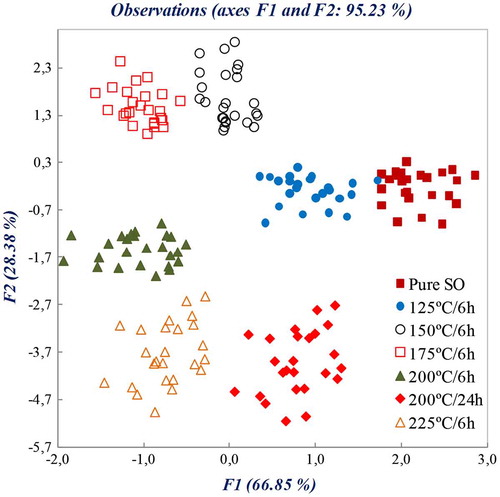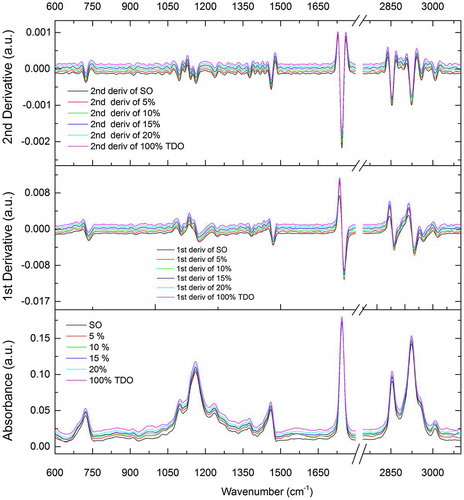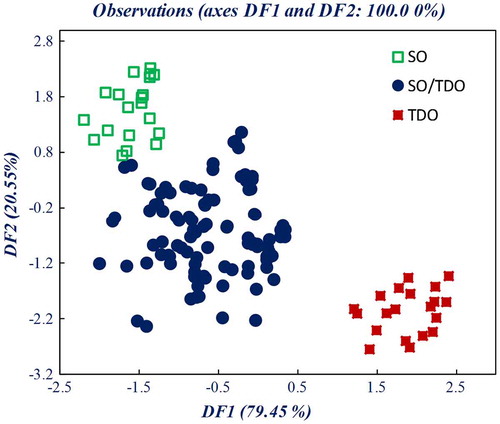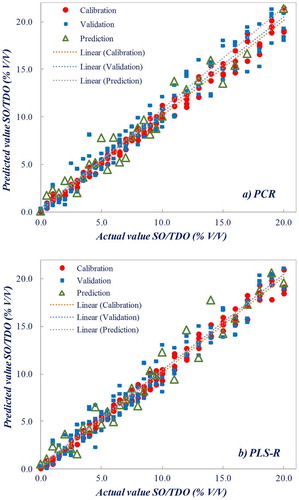Figures & data
Figure 1. FTIR spectra of sunflower oil (SO) samples heated at temperatures ranging from 125 to 225°C for 6 h

Figure 2. Observation diagram of a principal component analysis for the differentiation of sunflower oil (SO) samples deteriorated using a set of different conditions using FTIR-ATR spectral data

Figure 3. Measured spectra together with its first and second derivatives for sunflower oil (SO) samples, thermally deteriorated sunflower oil (TDO, 200°C/24 h), and SO adulterated with 5, 10, 15, and 20% of TDO (sub-set of Set B)

Figure 4. Similarity map as determined by discriminant analysis using factors DF1 and DF2 for FTIR-ATR spectral data of pure sunflower oil (SO), thermally deteriorated sunflower oil (TDO), and SO mixed with thermally deteriorated sunflower oil (SO/TDO) (samples with less than 5% of TDO deteriorated at 200°C for 24 h)


